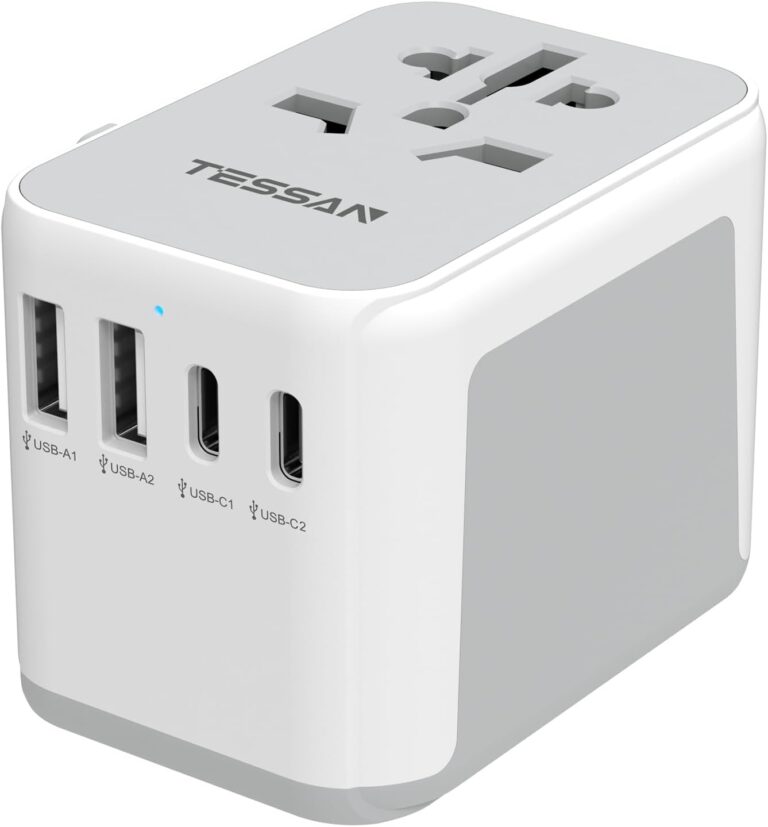I nearly made a mistake packing for Japan. My European adapter collection was useless because Japan uses the same plugs as the United States – flat two-pin Type A. But the voltage caught me out: Japan runs at 100V, which is lower than both the UK (230V) and the US (110-120V). My laptop and phone chargers handled it fine because they are dual-voltage, but I am glad I did not pack my UK hair dryer. The good news is that most electronics from the past decade will work; you just need to check the small print on your charger.
Japan uses Type A plugs (two flat parallel pins) and operates at 100V – lower than most other countries. Here’s what you need to know.
Quick Answer
- Plug Type: Type A (two flat pins), some Type B
- Voltage: 100V
- Frequency: 50Hz (eastern Japan) / 60Hz (western Japan)
- UK travelers: Need an adapter
- US travelers: Usually don’t need an adapter
Featured Product
Plug Types in Japan
Type A: Two flat parallel pins, ungrounded. Most common in Japan.
Type B: Same as Type A plus a grounding pin. Less common.
Both are the same as used in North America, but Japanese outlets may be narrower.
Voltage: The 100V Difference
Japan operates at 100V – this is important:
- UK uses 230V – significant difference
- US uses 110-120V – close enough for most devices
- Most of Europe uses 220-240V – significant difference
Do You Need a Converter?
Modern electronics (laptops, phones, tablets, cameras): Usually no. Most are dual-voltage (100-240V). Check the label on your charger.
Hair dryers, straighteners, curling irons: Often yes. These are typically single-voltage and designed for your home country’s voltage. Using a 230V hair dryer on 100V will result in weak performance; using a 110V device might work but not optimally.
Tip: For high-wattage appliances, consider buying a local version in Japan rather than using a voltage converter.
Who Needs What
| From | Adapter? | Converter? |
|---|---|---|
| UK | Yes | Usually no (dual-voltage devices) |
| USA/Canada | Usually no | Usually no |
| Europe | Yes | Usually no (dual-voltage devices) |
| Australia | Yes | Usually no (dual-voltage devices) |
Frequency Note
Japan has two frequencies:
- 50Hz: Eastern Japan (Tokyo, Yokohama, Tohoku, Hokkaido)
- 60Hz: Western Japan (Osaka, Kyoto, Nagoya, Hiroshima)
This rarely matters for travelers unless you’re using devices with motors or older electronics.
Charging on the Go
- Shinkansen (bullet trains): Many newer trains have Type A outlets at seats
- Cafes and restaurants: Many have outlets for customers
- Stations and airports: Paid charging lockers available
Where to Buy
Before travel: Amazon, electronics stores, travel stores
In Japan: Yodobashi Camera, Bic Camera, 100 yen shops (Daiso), hotel reception







